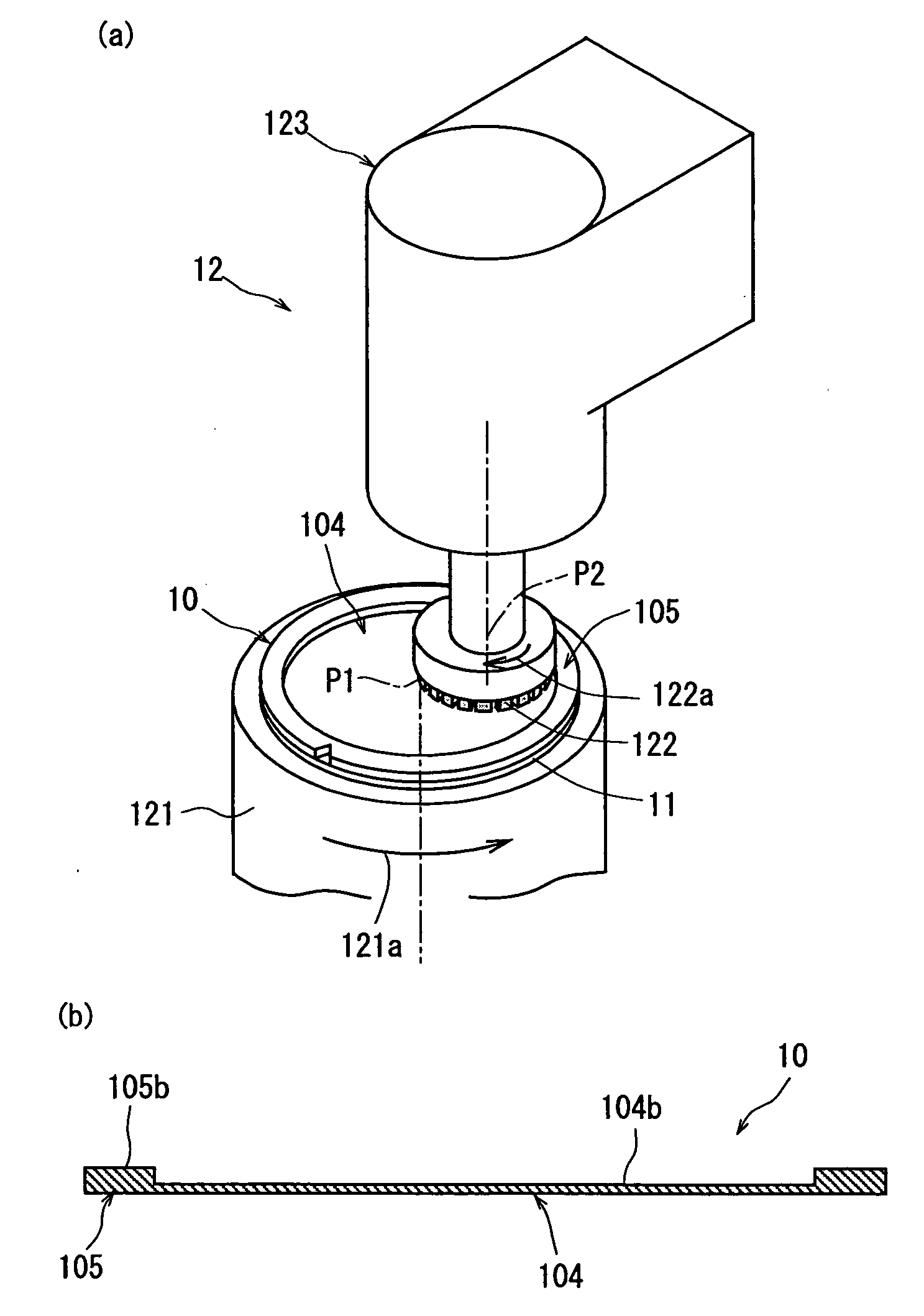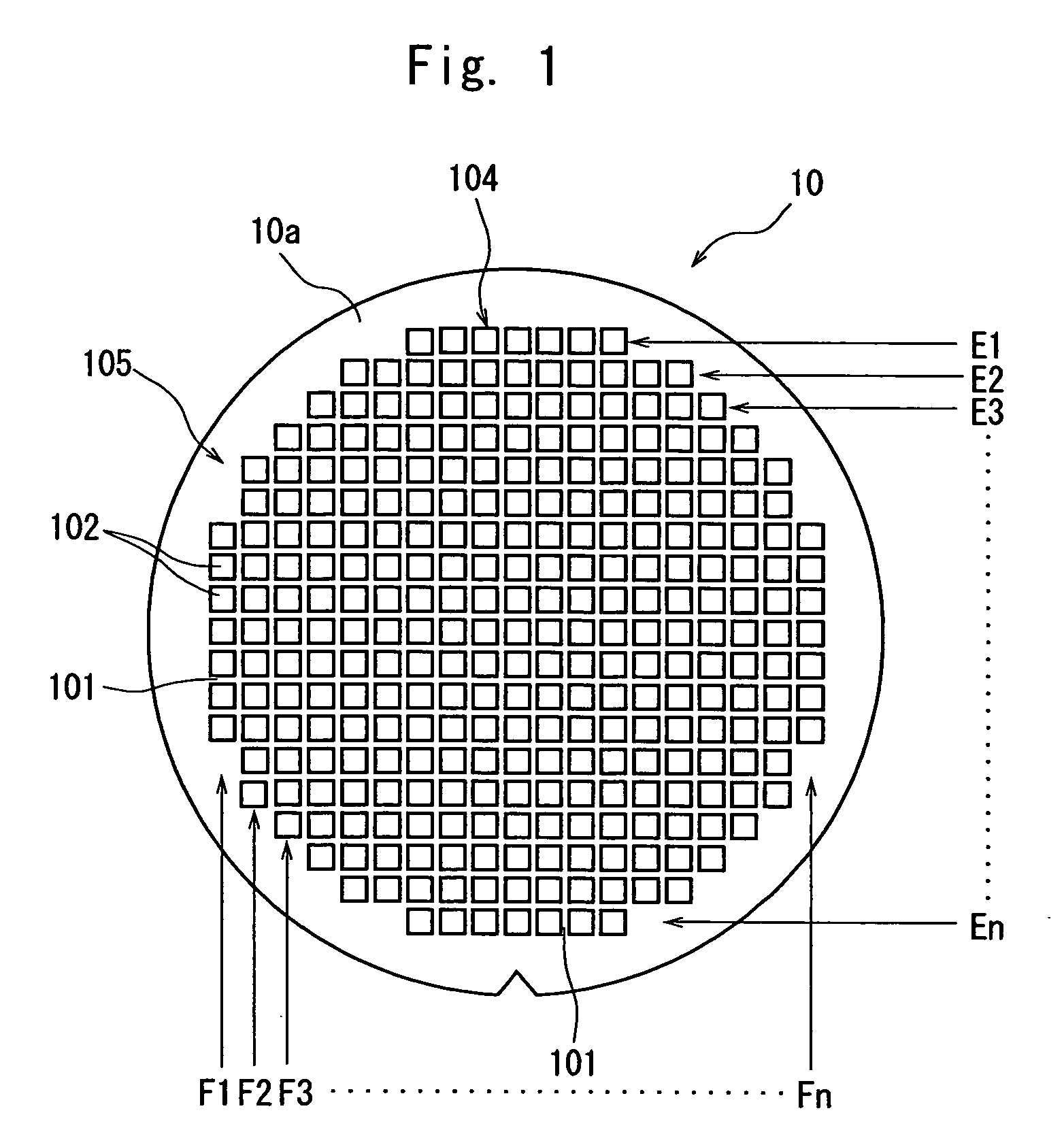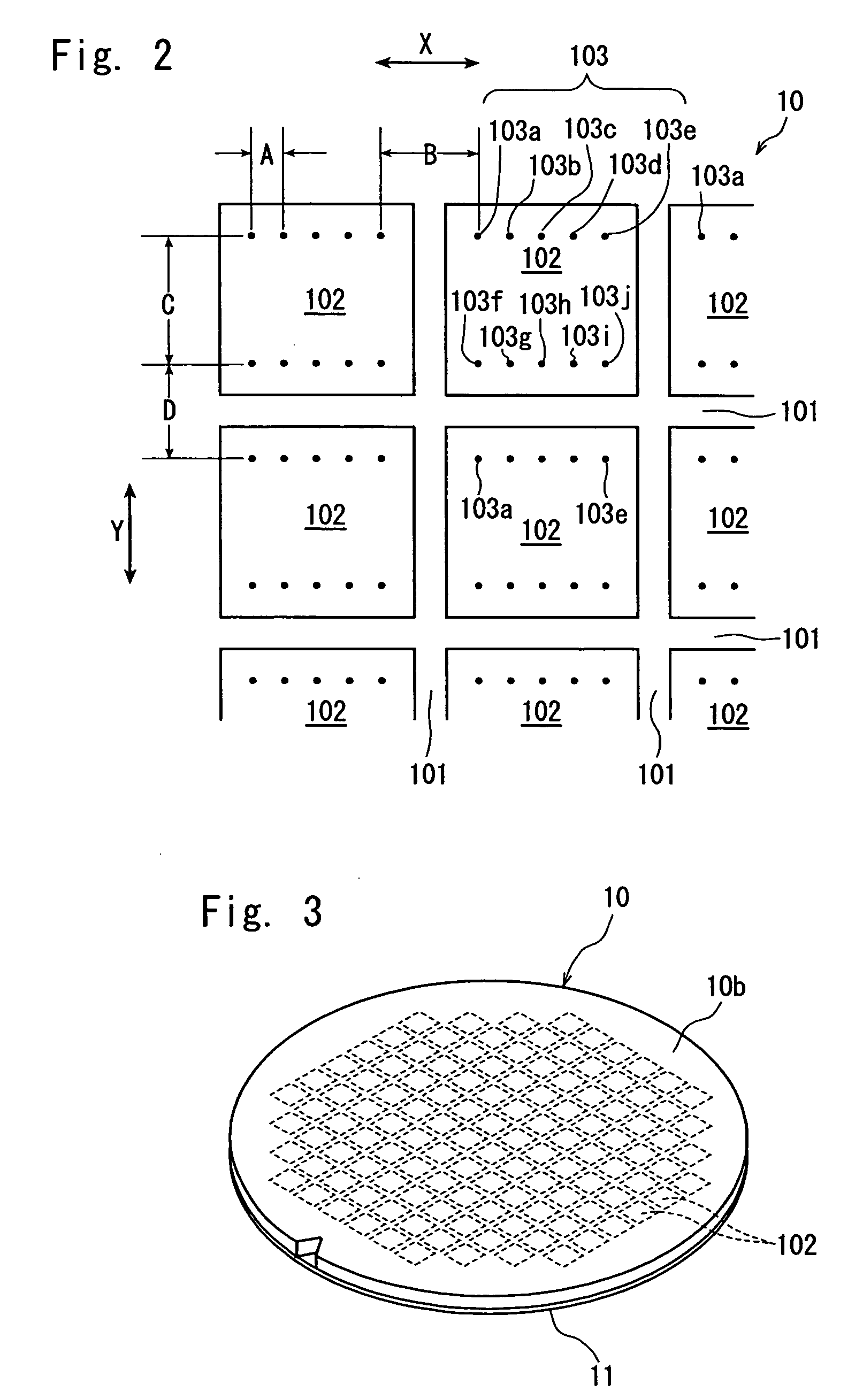Wafer processing method
a processing method and wafer technology, applied in welding/soldering/cutting articles, manufacturing tools, solid-state devices, etc., can solve the problems of difficult to form via-holes with a diameter of 30 to 500 m, wafers are easily broken, and are difficult to handle during conveyance, so as to maintain the effect of stiffness
- Summary
- Abstract
- Description
- Claims
- Application Information
AI Technical Summary
Benefits of technology
Problems solved by technology
Method used
Image
Examples
Embodiment Construction
[0022] Preferred embodiments of the present invention will be described in more detail hereinunder with reference to the accompanying drawings.
[0023]FIG. 1 is a plan view of a semiconductor wafer as a wafer to be processed according to the present invention. The semiconductor wafer 10 shown in FIG. 1 is, for example, a silicon wafer having a thickness of 700 μm, a plurality of streets 101 are formed on the front surface 10a, and a device 102 such as IC or LSI is formed in a plurality of areas sectioned by the plurality of streets 101. These devices 102 are the same in constitution. A plurality of electrodes 103 (103a to 103j) are formed on the surface of each device 102, as shown in FIG. 2. In the illustrated embodiment, electrodes 103a and 103f, electrodes 103b and 103g, electrodes 103c and 103h, electrodes 103d and 103i, and electrodes 103e and 103j are at the same positions in the X direction. A via-hole is formed in each of the plurality of electrodes 103 (103a to 103j). The in...
PUM
| Property | Measurement | Unit |
|---|---|---|
| diameter | aaaaa | aaaaa |
| thickness | aaaaa | aaaaa |
| thickness | aaaaa | aaaaa |
Abstract
Description
Claims
Application Information
 Login to View More
Login to View More - R&D
- Intellectual Property
- Life Sciences
- Materials
- Tech Scout
- Unparalleled Data Quality
- Higher Quality Content
- 60% Fewer Hallucinations
Browse by: Latest US Patents, China's latest patents, Technical Efficacy Thesaurus, Application Domain, Technology Topic, Popular Technical Reports.
© 2025 PatSnap. All rights reserved.Legal|Privacy policy|Modern Slavery Act Transparency Statement|Sitemap|About US| Contact US: help@patsnap.com



